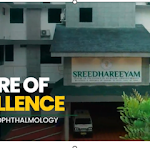Well.. just because something works in nature does not mean that man can replicate that in a laboratory as it is!
The conclusion is becoming clear: whatever is behind the health benefits of a diet rich in fruits and vegetables, you cannot reproduce it by taking purified extracts or vitamin supplements.
The folk lore of the anti-oxidants and the entire industry spawned on nonsensical claims is a good case in point. So before you pop the next Vitamin E pill hoping all your ills from oxidant Free radicals will be bygones.. THINK TWICE.. you may be poping in impotent, at best, and downright harmful, at worst.. chemicals you can certainly do without!
Free radicals are compounds with unpaired electrons that stabilise themselves by oxidising other molecules – including proteins, carbohydrates, lipids and DNA. In the process they often create more free radicals, sparking off a chain of destruction. Oxidative damage accompanies most, if not all, diseases and has even been proposed as a direct cause of some including lung cancer, atherosclerosis and Alzheimer’s.
Free radicals are an unavoidable hazard of being alive. We live in an oxygen-rich atmosphere, and radicals, particularly reactive oxygen species (ROS), are natural by-products of respiration. "One per cent of the oxygen we consume turns into ROS," says biochemist Barry Halliwell from the National University of Singapore. "It doesn’t sound like much but humans are big animals and we breathe a lot. Over a year a human body makes 1.7 kilograms of ROS." Exposure to X-rays, ozone, tobacco smoke, air pollutants, microbial infections, industrial chemicals and intensive exercise also trigger free radical production.
In the 1980s, however, a potential weapon against free radical damage appeared on the horizon. Scientists had known for a long time that people whose diets are rich in fruits and vegetables have a lower incidence of heart disease, diabetes, dementia, stroke and certain types of cancer – the very diseases that are associated with free radical damage. Now there was an explanation. Fruits and vegetables are a rich source of antioxidants that can neutralise free radicals by donating electrons to them.
Green plants are full of antioxidants for good reason. They are especially vulnerable to oxidative stress since they produce pure oxygen during photosynthesis. To protect themselves they manufacture an assortment of potent antioxidants.
And so a hypothesis was born: dietary antioxidants are free-radical sponges that can stave off the diseases of old age. It was a great idea. "Putting two and two together, scientists assumed that these antioxidants were protective, and that taking them as supplements or in fortified foods should decrease oxidative damage and diminish disease," says Halliwell, who pioneered research into free radicals and disease. "It was simple: we said free radicals are bad, antioxidants are good."
The concept helped spawn a colossal supplements industry. According to the US National Institutes of Health (NIH), more than half of US adults take some form of vitamin or mineral supplement at a total cost of $23 billion a year. The bewildering range of supplements on the shelves makes it hard to say how much of this expenditure goes on antioxidants, but the NIH says it is probably a "large proportion". And their popularity just keeps on growing. SPINS, a market research firm based in San Francisco, estimates that the antioxidant market has grown by 18 per cent in the past year alone.
The best known antioxidants are vitamin E (also known by its chemical name tocopherol), vitamin C, and two broad classes of plant chemicals called polyphenols (including flavonoids) and carotenoids (including beta carotene and lycopene). Most supplements touted as antioxidants contain at least one of these, often as a pure chemical and sometimes as a concentrated plant extract.
Since the early 1990s scientists have been putting these compounds through their paces, using double-blind randomised controlled trials – the gold standard for medical intervention studies. Time and again, however, the supplements failed to pass the test. True, they knock the wind out of free radicals in a test tube. But once inside the human body, they seem strangely powerless. Not only are they bad at preventing oxidative damage, they can even make things worse. Many scientists are now concluding that, at best, they are a waste of time and money. At worst they could be harmful.
Powered by Qumana














